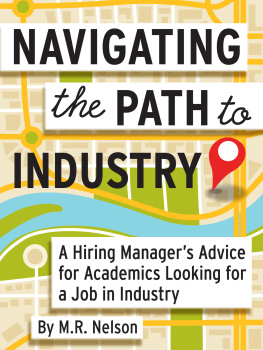OilAn Overview of the Petroleum Industry
Sixth Edition
Copyright 2007 by Gulf Publishing Company, Houston, Texas. This book was originally published as OilFrom Prospect to Pipeline in 1958 by Gulf Publishing Company.
All rights reserved.
No part of this publication may be reproduced or transmitted in any form without the prior written permission of the publisher.
Gulf Publishing Company
2 Greenway Plaza, Suite 1020
Houston, TX 77046
10987654321
Printed in the United States of America.
Printed on acid-free paper.
Library of Congress Cataloging-in-Publication Data
Grace, Robert.
Oil : an overview of the petroleum industry / Robert Grace.6th ed.
p. cm.
ISBN 1-933762-01-2 (978-1-933762-01-2 : alk. paper)
1. Petroleum industry and trade. 2. Petroleum industry and tradeUnited States. 3. Energy industries. 4. Energy industriesUnited States. I. Title.
HD9560.5.G615 2007
338.27282dc22
2006038253
Preface
This book has always been a short, comprehensive overview of the oil industry. Obviously, almost any subject touched on in this volume could be the subject of an entire book much lengthier than this one. But, I hope it does give the reader a basic understanding of the industry, how things work, the objectives and how they are accomplished. I also hope it will give the reader a sincere appreciation for the vast amount of expertise, engineering, science and technology required to put that gallon of gasoline in the tank that drives their car or heats their home.
It is an amazing industry! It stretches worldwide. It operates in the most hostile environments. Amazing tools have been developed that withstand unimaginable stresses. Holes which are more than five miles in depth are drilled to produce oil and gas. Oil is produced in ocean waters that are two miles in depth. From the wellhead to the automobile or airplane is a delicate balance of supply and demand. The energy industry deserves our highest respect and greatest honor. It keeps our cars running with the kids going to school and us going to work. Without it well, the consequences are too severe to consider. But, it is safe to say we would all be walking or riding bicycles or horses.
The first edition of this book was published in 1958. That is almost 50 years ago. I graduated from high school in 1959 and embarked on my odyssey in this industry a few years later.
My father was a roughneck on a drilling rig when I was born. I grew up in Oklahoma at a time when 85 percent of the local population made their living from the oil industry. So, basically, Ive been in the oil business all my life.
I never dreamed I would live to see the changes Ive seen in this business since the first edition was published. In the 1960s I was told by a Humble Oil (now Exxon) board member that oil would never be worth more than $3.15 per barrel! Since, it has soared to unimaginable multiples of that number!
The energy industry that I went into was the finest industry in the world. It had an infrastructure second to none! Then, oil and gas prices were deregulated in the early 1980s and the industry was basically destroyed. We lost at least one half million workers, never to return. Had it been the auto industry instead of the oil industry, the government would have intervened and rescued us. But, it was not to be. At one time, in the mid 1980s, the biggest employer of geologists in Houston was Yellow Cab!
We have seen the destruction of the domestic industry and the rise of the international industry. Energy prices after the early 1980s were unrealistically low. As a result, the United States became an energy glutton. The United States has become enslaved to the oil-exporting countries by its dependence on and insatiable appetite for energy.
For 20 years after the crash of 1981, no one wanted to be in the oil business. Bankers would run if someone wanted to borrow money for anything related to the energy business. The petroleum engineering schools were empty. None of the major companies were training people. Everyone was downsizing or simply selling out. I would never have dreamed in 1965 when I graduated from the University of Oklahoma that companies such as Amoco, Gulf and Mobil would simply disappear!
Now, the demand is challenging the supply and prices are volatile. The United States is addicted to energy. We consume much more energy per capita than any other country on the planet. Therefore, we are impacted the most by volatile supplies and prices! But, our infrastructure is gone! The citizenry believes that someone should be able to do something to enable us to maintain our addiction. But, we cant. The reality is that the domestic industry controls only a small fraction of the energy we consume. On the remainder, we are hostages to an ever more hostile world.
It is therefore vitally important that everyone in this country have a basic understanding of the energy industry. I hope this text will provide that basic understanding. This great country of ours cannot exist without an abundant supply of energy. It will be a great challenge for future generations to meet those needs.
World Oil
This book always has been and will continue to be a short, comprehensive overview of oil operations, excluding refining and marketing. It is not intended to be technical. It is intended to educate those interested in the basics of the industry.
This is a fun book to write. I find myself updating the third edition, which was written in 1975. It is fun to read the predictions made then and compare those predictions with actual events. Then, too, I get to look into my crystal ball and forecast what the future holds for all of us. By the time anyone figures out whether I was right or wrong, I will either be departed from this world or too old to care.
It was 17 years from the first to the third edition and now 31 years between the third and sixth editions. A lot has happened in our business in the last 31 yearsmore than I ever dreamed I would see. In 1975, Tenneco was a big player in the domestic oil business and now few remember the name. Who would believe that Amoco, Gulf, and Mobil would disappear? The USSR has fallen along with the Berlin Wall.
The energy industry has always had a history of booms and bustschicken one day and feathers the next. As a small boy, I always enjoyed roaming the fields of central Oklahoma and hearing stories from my father and his family about the oil boom towns that sprung up and disappeared. They were wild and woolly places!
The early 1970s marked the beginning of the biggest boom/bust cycle in the history of the industry. By 1981, more than 4500 drilling rigs were running in the United States. Busts always followed booms and by the mid 1980s the industry was in the depths of the worst depression we had ever seen. It was said that the biggest employer of geologists in Houston was Yellow Cab. It was estimated that over a half million jobs had been lost. In the 31 years since the 1975 addition, we witnessed the demise of one of the finest, most capable industries the world has ever known!
The energy industry remained in the depths of depression with few lights until just recently. It is now 2006 and we are finally in another boom period. Oil reached $75 per barrel and natural gas above $10 per million standard cubic feet. Gasoline prices have been driven up close to $3 per gallon nationwide.
What is the significance of all of this for the common man? What does the future hold for us, our children and our grandchildren?












